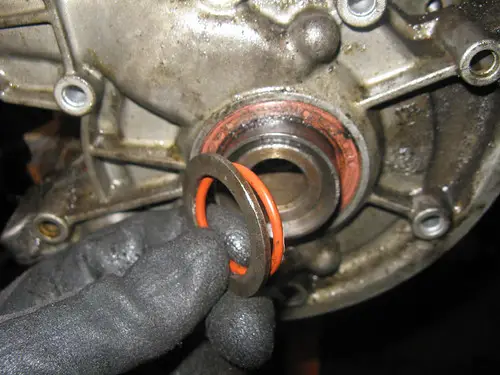Maintaining the health of your car’s engine is crucial for optimal performance and longevity. The rear main seal plays a vital role in preventing oil leaks, but when it fails, it can lead to costly consequences. In this comprehensive guide, we will delve into the process of diagnosing rear main seal leaks, explore the expenses associated with replacement, discuss a method of how to replace a rear main seal without removing the transmission, and touch upon the effectiveness of rear main seal stop leak solutions.
Understanding Rear Main Seal Leaks
- Rear main seal leaks pose a serious risk, causing oil levels to drop and potentially resulting in irreversible engine damage.
- The high oil pressure near the rear main bearing and the constant wear from the spinning crankshaft make the seal prone to leaks.
- Replacing a rear main seal is a labor-intensive and costly process, typically requiring engine or transmission disassembly.
The Cost of Rear Main Seal Replacement
- Rear main seal replacement costs can vary significantly, with labor expenses being the primary factor.
- Factors such as job complexity, required specialized tools, additional services, and potential mechanical part replacements influence the overall cost.
- The cost is also influenced by the specific make and model of the vehicle.
How to Replace a Rear Main Seal Without Removing the Transmission
- While typically a complex procedure, it is possible to replace a rear main seal without removing the transmission.
- The process involves steps such as disconnecting the battery, removing the driveshaft or CV axles, detaching the transmission, and accessing the rear main seal housing.
- The old seal is carefully removed, the new seal is installed, and the components are reassembled in reverse order.
Troubleshooting a Rear Main Seal Leak
- Diagnosing a rear main seal leak involves observing oil stains and conducting simple tests, such as idling the engine.
- Dye can be used to pinpoint the exact location of the leak, as other components near the rear main seal might also be potential sources.
- Checking the transmission, oil pan, valve cover gasket, and valley pan can help identify other possible sources of oil leaks.
Rear Main Seal Stop Leak Solutions
- Stop leak solutions, such as popular products like Blue Devil, offer a temporary fix for rear main seal leaks without requiring extensive disassembly.
- These solutions contain chemicals that react with the engine oil, effectively sealing cracks and gaps in the seal.
- While stop leak solutions provide temporary relief, it is crucial to address underlying issues and perform regular maintenance for long-term solutions.
Conclusion:
Diagnosing and addressing rear main seal leaks promptly is essential to protect your engine and avoid costly repairs. Understanding the costs associated with rear main seal replacement, as well as the process of replacing it without removing the transmission, can help car owners make informed decisions. Stop leak solutions offer a temporary fix, but they should not be considered a permanent solution. Regular maintenance and addressing underlying causes are key to maintaining a healthy vehicle.







